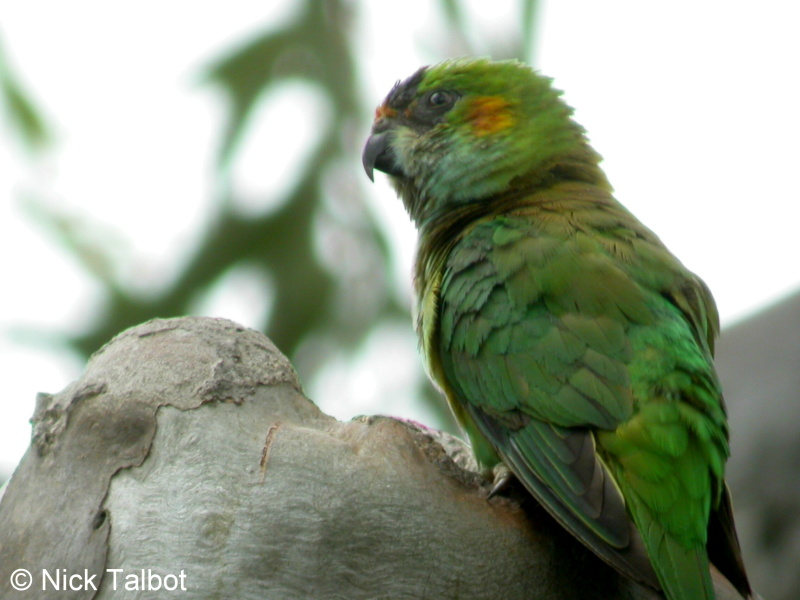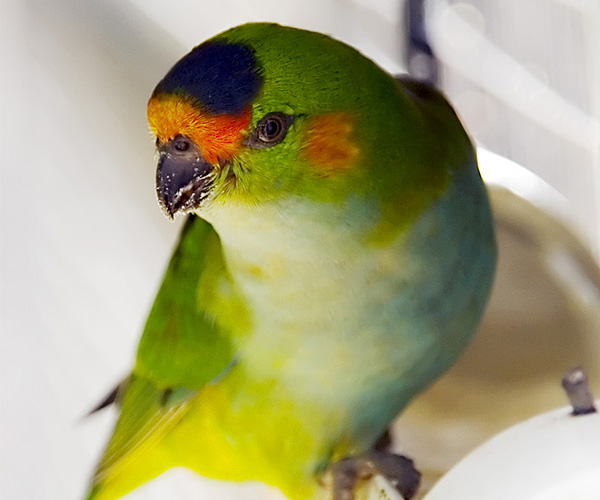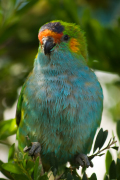
©Department of Environment & Primary Industries on Flickr: Purple-crowned Lorikeet (Parvipsitta porphyrocephala)
Colours
Distinguishing features
The male Purple-crowned Lorikeet is a small lorikeet with a dark purple crown, a yellow-orange forehead and ear-coverts, deepening to orange lores, and green upperparts, tinted bronze on the mantle and nape. The chin, chest and belly are a conspicuous powder blue, while the thighs and under-tail coverts are yellowish-green. The green tail has some orange-red coloration at the bases of the lateral feathers. The large crimson patches under the wings are visible when the bird is in flight. The small beak is black, the iris brown and the feet grey.
The female is similar but has a darker iris, paler ear coverts and lacks the crimson patches.
Immature birds are duller and lack the purple crown. (Wikipedia)
Size
- Up to 16 cm (Length of specimen)
Wingspan
- Up to 30 cm
Synonyms
Distribution
Distribution and habitat preferences
The Purple-crowned Lorikeet is found in southwest Western Australia, and in southern South Australia, east from the southern Eyre Peninsula, through the Gawler Range and southern Flinders Ranges and across Victoria to East Gippsland. It is also found on Kangaroo Island. It is not found in Tasmania.
Locally nomadic, it is often found in dry sclerophyll forest, especially where Eucalyptus trees are flowering. (Wikipedia)
Audio recordings
Diet
Blossoms of various Eucalyptus and Melaleuca species, and the Boobialla (Myoporum insulare) are among material consumed. (Wikipedia)



